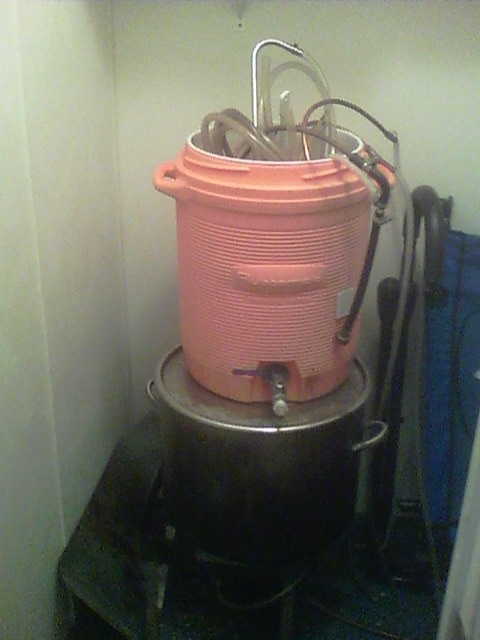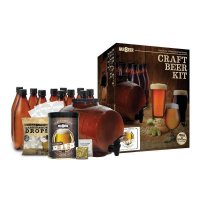Much good advice was already given.
For low investment brewing, start with the largest cooking pot in your home, stainless or enameled would be best, but could be aluminum too.
Your final batch size would be around
twice that volume.
And you can always brew a smaller batch. A gallon batch is about the minimum, although somewhat small for all the work and time investment involved.
You also need a vessel to ferment in, about 15-20% larger than your batch volume, as it needs to offer some headspace above the liquid. A bucket could work, or one of those 1-3 gallon plastic "drums" they sell cheese doodles or pretzels in.
I would avoid
Mr. Beer and similar kits at any rate, the ingredients are crap.
Basically, any extract "kits" that could have been on a shelf for 3 months or longer, are
not a good start. You want fresh ingredients. If you have a local homebrew store within reasonable distance, that would be your best option to source fresh(er) ingredients.
Beer has 4 main ingredients:
- Fermentables - Malted grain and/or malt extract. You could do a (small) mash, using crushed/milled malted grain. But for your first few brews using (fresh) malt extract and some steeping grains makes it much easier (and quicker). Dry malt extract (DME) is preferred over Liquid malt extract (LME), unless you know the LME is very fresh (<2-3 months old). Dry extract, a powder, in sealed plastic bags, can last several years if kept cool and dry. However, Liquid extract (it's a thick syrup, similar consistency as honey) stales rather fast, much faster than honey, for example.
- You also need some hops. There are many varieties, each with unique flavor and aroma and bittering potential. Which ones to use, how much, and at what time in the boil (and in the fermenter), depends on the style of beer you're brewing.
- Water - Brewing water should be reasonably soft, generally. When in doubt, you could buy Reverse Osmosis (RO) water, or "Spring" water. Municipal water needs to be dechlorinated. Use 1/4 Campden tablet (or a good pinch of Potassium or Sodium MetaBisulfite) is good to treat 5 gallons/19 liter.
- Yeast - An 11.5 gram pouch of dry (dried) beer yeast will be easiest.
A friendly suggestion/request:
What country do you live in?
Disclosing that, and maybe adding the country (and region or city) to your member's profile, can help with recommendations we can give you.
If you're seriously interested in homebrewing (beer), I can recommend reading John Palmer's
How to Brew,
4th. Edition. before you buy or brew anything.
There's a (several decades) old online version of the book's First Ed. on this site:
howtobrew.com. (The site seems to be down at this moment, YMMV).
Although much has changed or updated since, the principles of homebrewing not all that much.

























![Craft A Brew - Safale S-04 Dry Yeast - Fermentis - English Ale Dry Yeast - For English and American Ales and Hard Apple Ciders - Ingredients for Home Brewing - Beer Making Supplies - [1 Pack]](https://m.media-amazon.com/images/I/41fVGNh6JfL._SL500_.jpg)


































